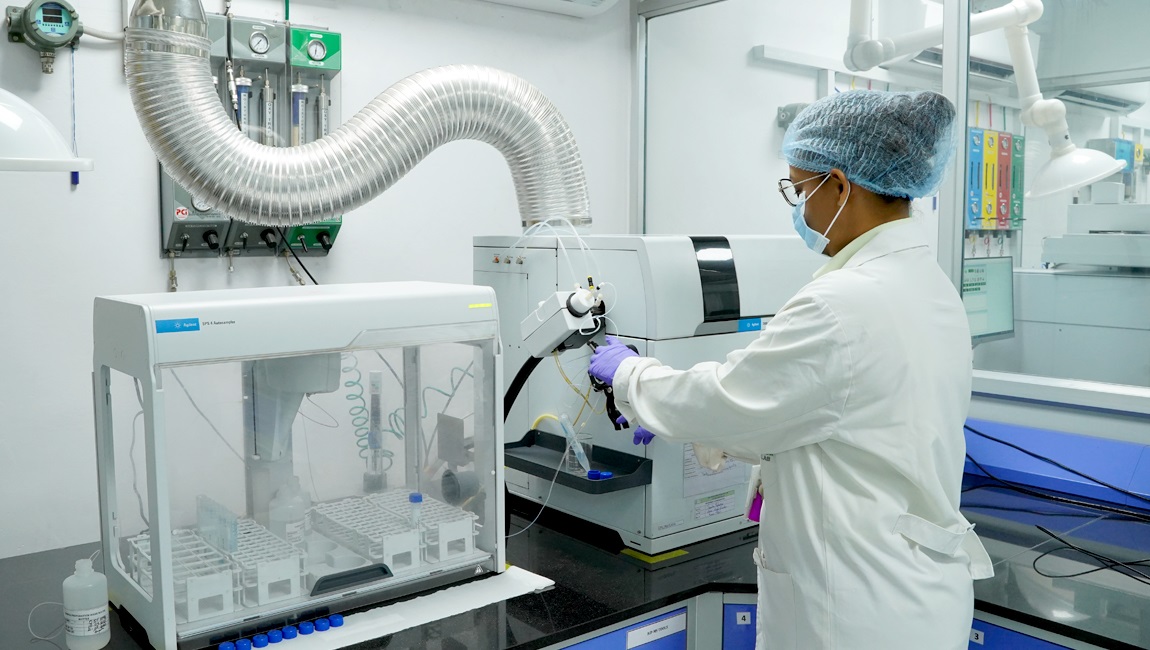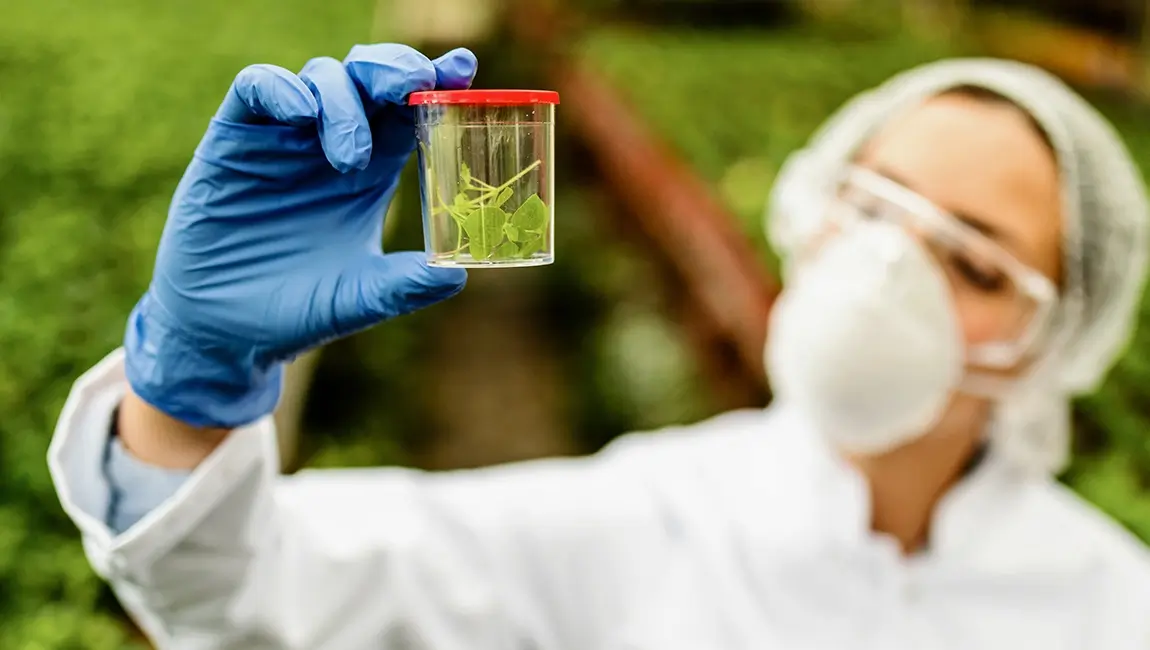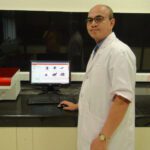Keep your products within the limit or free of heavy metal contamination to avoid recalls or penalties
Heavy metals are elements with a high atomic weight and at least five times the density of water. Common heavy metals of concern in food and agricultural products include arsenic (As), cadmium (Cd), lead (Pb), mercury (Hg), and chromium (Cr). Even at low quantities, these metals can be hazardous to humans and animals, and their presence in food and agricultural goods raises serious health concerns. These heavy metals’ toxicity mechanisms differ, but in general, they impair cellular and molecular processes. We have provided an overview of heavy metals.
1. Arsenic (As)
-
Sources of Arsenic: Contaminated ground water and industrial processes.
-
Toxic Mechanism of Arsenic (As): Arsenic increases the generation of Reactive Oxygen Species (ROS), which causes oxidative damage to lipids, proteins, and DNA. Arsenic inhibits enzyme functions, especially those involved in cellular respiration and DNA repair. Arsenic can cause DNA mutations, chromosomal abnormalities, and mitotic disturbances, resulting in cancer and other genetic problems. Arsenic influences cell development, differentiation, and apoptosis via a variety of snoop signalling mechanisms.
2. Cadmium (Cd)
-
Sources of Cadmium (Cd): Contaminated soil, water, fertilizers, and industrial emissions
-
Toxic Mechanism of Cadmium (Cd): Cadmium increases the formation of ROS (Reactive Oxygen Species), resulting in oxidative damage and inflammation. Cadmium can displace calcium ions, disrupting bone mineralization and resulting in bone disorders. Cadmium accumulates in the kidneys, resulting in tubular damage and impaired renal function. Cadmium hinders DNA repair pathways, causing genomic instability and carcinogenesis.
3. Lead (Pb)
-
Sources of Cadmium (Cd): Contaminated water, soil, air, and paint.
-
Toxic Mechanism of Lead (Pb): Lead disrupts neurotransmitter release and synaptic functions, leading to cognitive deficits and behavioural problems. Lead interferes with heme synthesis, causing anaemia. Lead induces ROS (Reactive Oxygen Species) production, resulting in oxidative damage to cells. Lead competes with calcium ions, disrupting various physiological processes including nerve transmission and bone development.
4. Mercury (Hg)
-
Sources of Mercury (Hg): Industrial emissions, contaminated water, fish, and dental amalgams
-
Toxic Mechanism of Mercury (Hg): Mercury, particularly methylmercury, passes the blood-brain barrier and accumulates in the brain, impairing neuronal function and resulting in cognitive and motor deficiencies. Mercury promotes ROS (Reactive Oxygen Species) generation, which causes lipid peroxidation, protein oxidation, and DNA damage. Mercury has an effect on the immune system and may contribute to autoimmune illnesses. Mercury disrupts several biological signalling pathways, influencing cell proliferation and death.
5. Chromium (Cr)
-
Sources of Chromium (Cr): Industrial processes, contaminated water, and certain food additives.
-
Toxic Mechanism of Chromium (Cr): Hexavalent chromium (Cr (VI)) is extremely reactive and produces ROS, which causes oxidative damage to DNA, proteins, and lipids. Genotoxicity: Cr (VI) can directly damage DNA and cause mutations, raising the risk of cancer. Cr (VI) inhibits various cellular enzymes, which disrupts metabolic processes. Chromium can trigger allergic dermatitis and other hypersensitivity reactions.
Heavy metals testing in AYUSH food and agriculture products

Heavy metal testing in AYUSH, food and agriculture products uses a variety of analytical techniques to detect and quantify the presence of heavy metals such as arsenic (As), cadmium (Cd), lead (Pb), mercury (Hg), and chromium. The following are the key steps and procedures used in heavy metal testing :
1. Sample Collection and Preparation for Heavy Metals Testing in AYUSH, Food and Agriculture products : Samples are obtained from numerous sources, water, crops, and animal products. Samples are prepared using operations like washing, drying, grinding, and homogenizing to ensure consistency.
2. Microwave-Assisted sample digestive for Heavy Metals Testing : Wet digestion involves treating samples with powerful acids (such as nitric acid and hydrochloric acid) to break down the organic matrix and liberate heavy metals into a solution and follow by filtration of digested solution with Whatman Paper-42 Number and finally dilute the sample which is ready for ICP-MS analysis. Microwave-Assisted digestive employs microwave energy to heat the sample with acids, which accelerates the digestive process. This closed-vessel technique reduces contamination and loss of volatile components, resulting in more exact findings. Overall, this procedure provides a quick, safe, and effective way to prepare samples for heavy metal analysis.
3. Analytical Techniques used Inductively Coupled Plasma Mass Spectrometry (ICP-MS) for Heavy Metals sample analysis Principle: Ionises the sample using an inductively linked plasma and measures the ions’ mass-to-charge ratio. Highly sensitive, capable of detecting trace quantities of numerous heavy metals at once.
4. Quality Control and Assurance for Heavy Metals Testing Methodology : To maintain accuracy and precision, use only approved reference materials and calibration standards. Blanks (samples without analytes) and duplicates are used on a regular basis to check for contamination and repeatability. Spiking samples with known metal concentrations to ensure recovery rate and procedure accuracy.
5. Data Analysis and Reporting for Heavy Metals Testing : Calculation of metal concentrations using calibration curves and instrument measurements. To verify reliability, conduct cross-validation with other methods or laboratories. The results are presented in suitable units (e.g., mg/kg), along with detection limits and measurement uncertainty (MU) estimates.
6. Regulatory Compliance for Heavy Metals in your AYUSH, food and agriculture products : Compliance with regulatory standards established by organisations such as the World Health Organisation (WHO), Food and Agriculture Organisation (FAO), and local regulatory bodies such as FSSAI, AYUSH etc. Ensure that heavy metal concentrations in food and agricultural products do not exceed acceptable levels. The permissible limits for heavy metals in AYUSH products are as Lead (Pb): 10 ppm; Mercury (Hg): 1.0 ppm; Cadmium (Cd): 0.3 ppm and Arsenic (As): 3.0 ppm, whereas WHO maximum acceptable limit in drinking water as Arsenic: 0.01 mg/L; Cadmium: 0.003 mg/L; Mercury: 0.001 mg/ L; Silver: 0.01 g/L.
How can prevent heavy metal contamination of AYUSH, food and agricultural products?

-
Preventing heavy metal contamination in food and agricultural products requires a complex approach involving numerous approaches. Regular soil and water testing to detect and mitigate contamination, the use of clean and safe irrigation sources, and crop selection to decrease heavy metal uptake are all critical strategies. Implementing sustainable agriculture practices, such as crop rotation and organic fertiliser use, further reduces risks.
-
Strict limitations and monitoring systems are required to ensure that safety criteria, such as maximum allowable heavy metal levels, are met. Food processing should involve careful quality control laboratory testing at every critical point of production and the use of non-contaminating equipment. Educating farmers and consumers about the sources and risks of heavy metals, as well as advocating proper hazardous waste disposal, enhances overall safety.
-
Furthermore, global collaboration and investment in research and development of innovative detection and remediation technologies are critical. Combining these techniques allows us to effectively minimise heavy metal pollution while also maintaining the safety of our food supply. Determine the maximum permitted heavy metal levels in soil, water, and food products.
-
To ensure that these standards are met, implement strict monitoring and enforcement procedures. Create certification programmes for food products grown in non-contaminated soils and with safe water. Label of foods should be imposed for they have been laboratory tested for heavy metal contamination.
What we can do for heavy metals in AYUSH, food and agricultural products

-
Cultivator Phyto Lab is a market leader in the identification and quantitative analysis of over 50 metals, establishing the benchmark. Our procedure strictly adheres to national and international regulatory standards, resulting in unrivalled precision and reliability. We specialise in comprehensive heavy metal and mineral analysis for a variety of food matrices and commodities, such as spices, agricultural products, and beverages. By validating the safety and compliance of these products, we help our clients avoid costly recalls and penalties, assuring market success and consumer confidence. At Cultivator Phyto Lab, precision and excellence are key to all we do.
Authors

Dr. Sanjoy Gupta (Ph.D)
Senior Officer- Training and Capacity Building
Dr. Sanjoy Gupta is a seasoned researcher with 13 years of experience across plant biotechnology, health science, nutrition, phytoplankton, and botanical studies. He has conducted research at reputed institutions like CSIR IIP, BSI, NIOT, and Cultivator Natural Products. With over a dozen published articles in national/international journals and thoughtful blog contributions, Dr. Gupta’s multidisciplinary expertise advances knowledge in holistic wellness and scientific innovation.

Kumar Nitesh
FSSAI Approved Food Analyst | Sr. Manager - Technical Chemical Lab
Kumar Nitesh is a seasoned Food Analyst with over 10 years of expertise in method development, validation, and analytical testing across diverse parameters like pesticides, mycotoxins, plant actives, and contaminants. Proficient in advanced instrumentation like LC-MS/MS, GC-MS/MS, and ICP-MS, he has held pivotal roles at reputed organizations. Notably, Kumar Nitesh has been successfully faced as an auditee of different regulatory like EIC, NABL, FSSAI, APEDA, and AYUSH, along with excelling in over 100 national and international proficiency tests. Beyond his analytical pursuits, he contributes to scientific blogs, driving advancements in analytical chemistry and instrumentation.
Reference :
- Alengebawy A, Abdelkhalek ST, Qureshi SR, Wang MQ. Heavy Metals and Pesticides Toxicity in Agricultural Soil and Plants: Ecological Risks and Human Health Implications. Toxics. 2021 Feb 25;9(3):42. doi: 10.3390/toxics9030042. PMID: 33668829; PMCID: PMC7996329.
- https://www.ncbi.nlm.nih.gov/pmc/articles/PMC6465990/
- https://www.tandfonline.com/doi/full/10.1080/87559129.2021.1934005
- https://www.mdpi.com/2304-8158/12/18/3340
- https://www.ncbi.nlm.nih.gov/pmc/articles/PMC6719745/
- https://qcin.org/public/uploads/ck-docs/1586535432.Certification_Scheme_AYUSH-plc-standard6.pdf
- https://journals.plos.org/plosone/article?id=10.1371/journal.pone.0267719
- https://link.springer.com/chapter/10.1007/978-981-15-7459-7_15

